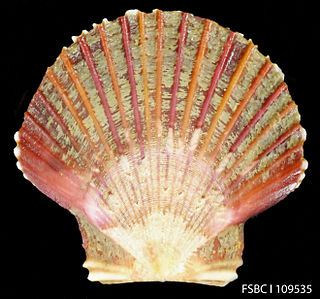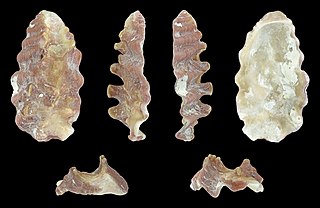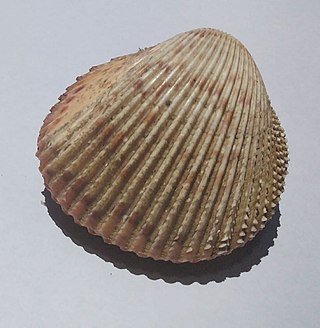
The Lesser Antilles are a group of islands in the Caribbean Sea. Most of them are part of a long, partially volcanic island arc between the Greater Antilles to the north-west and the continent of South America. The islands of the Lesser Antilles form the eastern boundary of the Caribbean Sea where it meets the Atlantic Ocean. Together, the Lesser Antilles and the Greater Antilles make up the Antilles. The Lesser and Greater Antilles, together with the Lucayan Archipelago, are collectively known as the West Indies.

British North America comprised the colonial territories of the British Empire in North America from 1783 onwards. English colonisation of North America began in the 16th century in Newfoundland, then further south at Roanoke and Jamestown, Virginia, and more substantially with the founding of the Thirteen Colonies along the Atlantic coast of North America.

The North America and West Indies Station was a formation or command of the United Kingdom's Royal Navy stationed in North American waters from 1745 to 1956, with main bases at the Imperial fortresses of Bermuda and Halifax, Nova Scotia. The North American Station was separate from the Jamaica Station until 1830 when the two combined to form the North America and West Indies Station. It was briefly abolished in 1907 before being restored in 1915. It was renamed the America and West Indies Station in 1926. It was commanded by Commanders-in-Chief whose titles changed with the changing of the formation's name, eventually by the Commander-in-Chief, America and West Indies Station.
The Atlantic Championship is a formula race car series with races throughout North America. It has been called Champ Car Atlantics, Toyota Atlantics, or just Atlantics or Formula Atlantic, although the latter two terms risk confusion with the Sports Car Club of America's amateur Formula Atlantics division.

The Atlantic hurricane season is the period in a year, from June 1 through November 30, when tropical or subtropical cyclones are most likely to form in the North Atlantic Ocean. These dates, adopted by convention, encompass the period in each year when most tropical cyclogenesis occurs in the basin. Even so, subtropical or tropical cyclogenesis is possible at any time of the year, and often does occur.

British America comprised the colonial territories of the English Empire, and the successor British Empire, in the Americas from 1607 to 1783. These colonies were formally known as British America and the British West Indies immediately prior to thirteen of the colonies seceding in the American Revolutionary War (1775–1783) and forming the United States of America.

The West Indies is a subregion of North America, surrounded by the North Atlantic Ocean and the Caribbean Sea, which comprises 13 independent island countries and 19 dependencies in three archipelagos: the Greater Antilles, the Lesser Antilles, and the Lucayan Archipelago.
Nuculana acuta, or the pointed nut clam, is a marine bivalve mollusc in the family Nuculanidae. It can be found along the Atlantic coast of North America, ranging from Massachusetts to Texas, including the West Indies.

Arca imbricata, or the Mossy ark clam, is a clam in the family Arcidae. It can be found along the Atlantic coast of North America, ranging from North Carolina to the West Indies, Brazil, and Bermuda.

Barbatia candida, or the White-bearded ark clam, is a clam in the family Arcidae. It can be found along the Atlantic coast of North America, ranging from North Carolina to Texas, including the West Indies.

Anadara transversa, or the Transverse ark clam, is a clam in the family Arcidae. It can be found along the Atlantic coast of North America, ranging from Massachusetts to Texas, including the West Indies.

Botula fusca, or the Cinnamon mussel, is a species of bivalve mollusc in the family Mytilidae. It can be found along the Atlantic coast of North America, ranging from North Carolina to the West Indies and Bermuda.

Atrina serrata, or saw-toothed pen shell, is a species of bivalve mollusc in the family Pinnidae. It can be found along the Atlantic coast of North America, ranging from North Carolina to Texas and the West Indies.

Euvola raveneli, or Ravenel's scallop, is a species of bivalve mollusc in the family Pectinidae. It can be found along the Atlantic coast of North America, ranging from North Carolina to the West Indies.

Dendostrea frons, the frond oyster, is a species of bivalve mollusc in the family Ostreidae.
Ostrea permollis, the sponge oyster, is a species of bivalve mollusc in the family Ostreidae. It can be found along the Atlantic Coast of North America, ranging from North Carolina to the West Indies.

Chama macerophylla, or the leafy jewel box clam, is a species of bivalve mollusc in the family Chamidae.

Dallocardia muricata, the yellow cockle, is a species of bivalve mollusc in the family Cardiidae. It can be found along the Atlantic coast of North America, ranging from North Carolina to the West Indies and Brazil.
Americardia media, the Atlantic strawberry cockle, is a species of saltwater clam, a marine bivalve mollusc in the family Cardiidae, the cockles. This species can be found along the Atlantic coast of North America, from Cape Hatteras to the West Indies.














